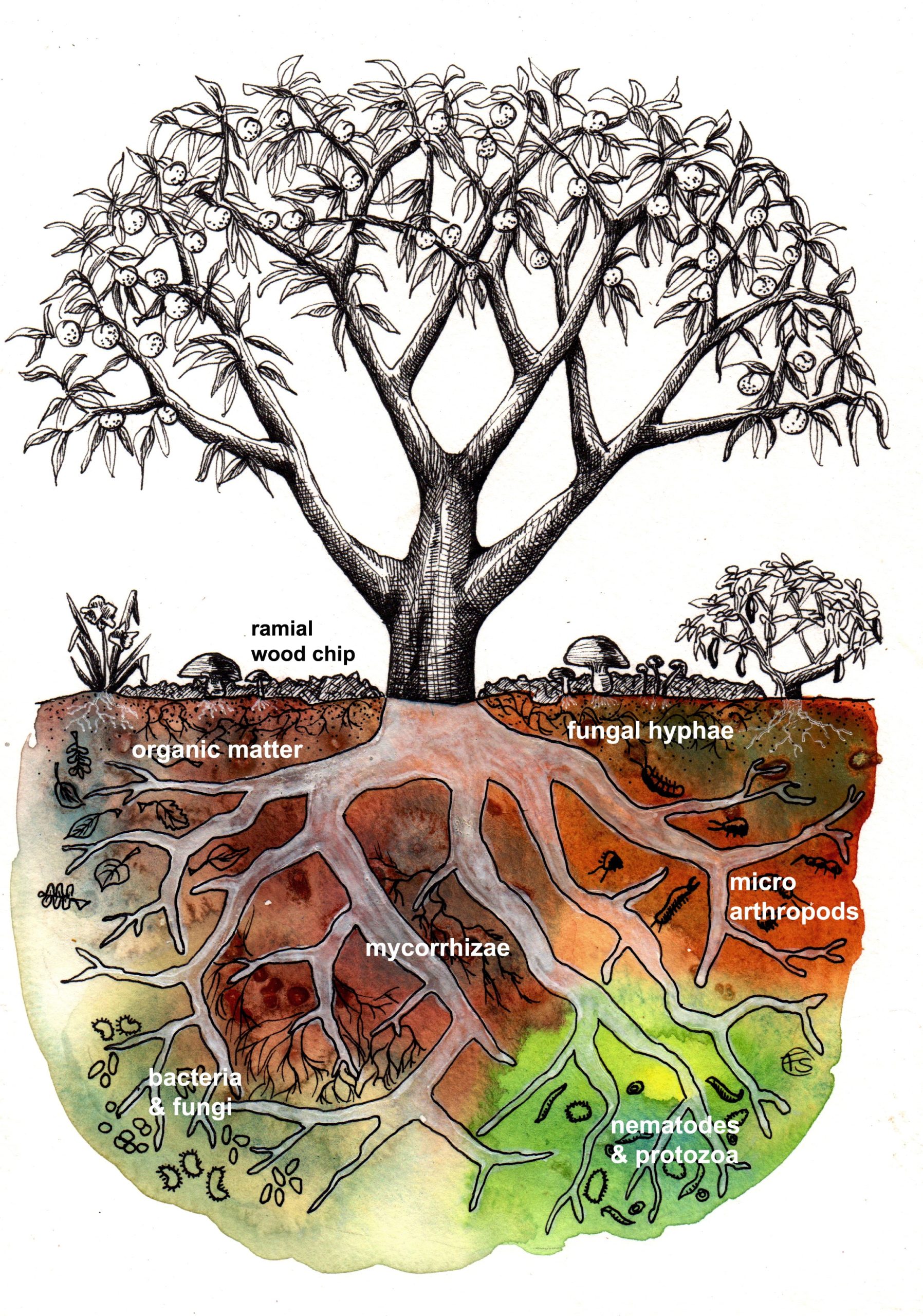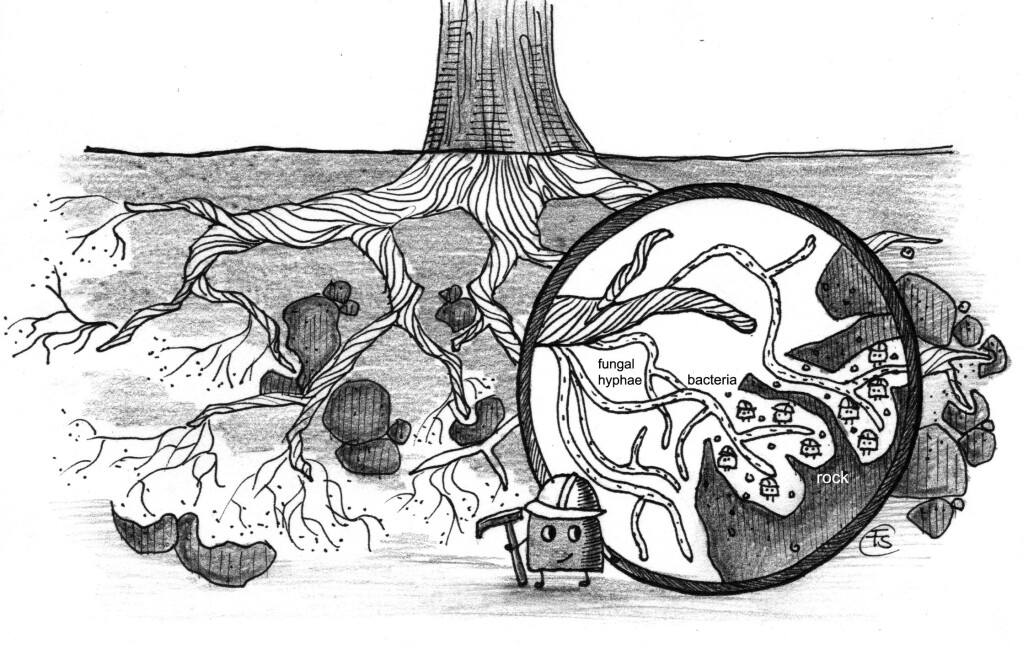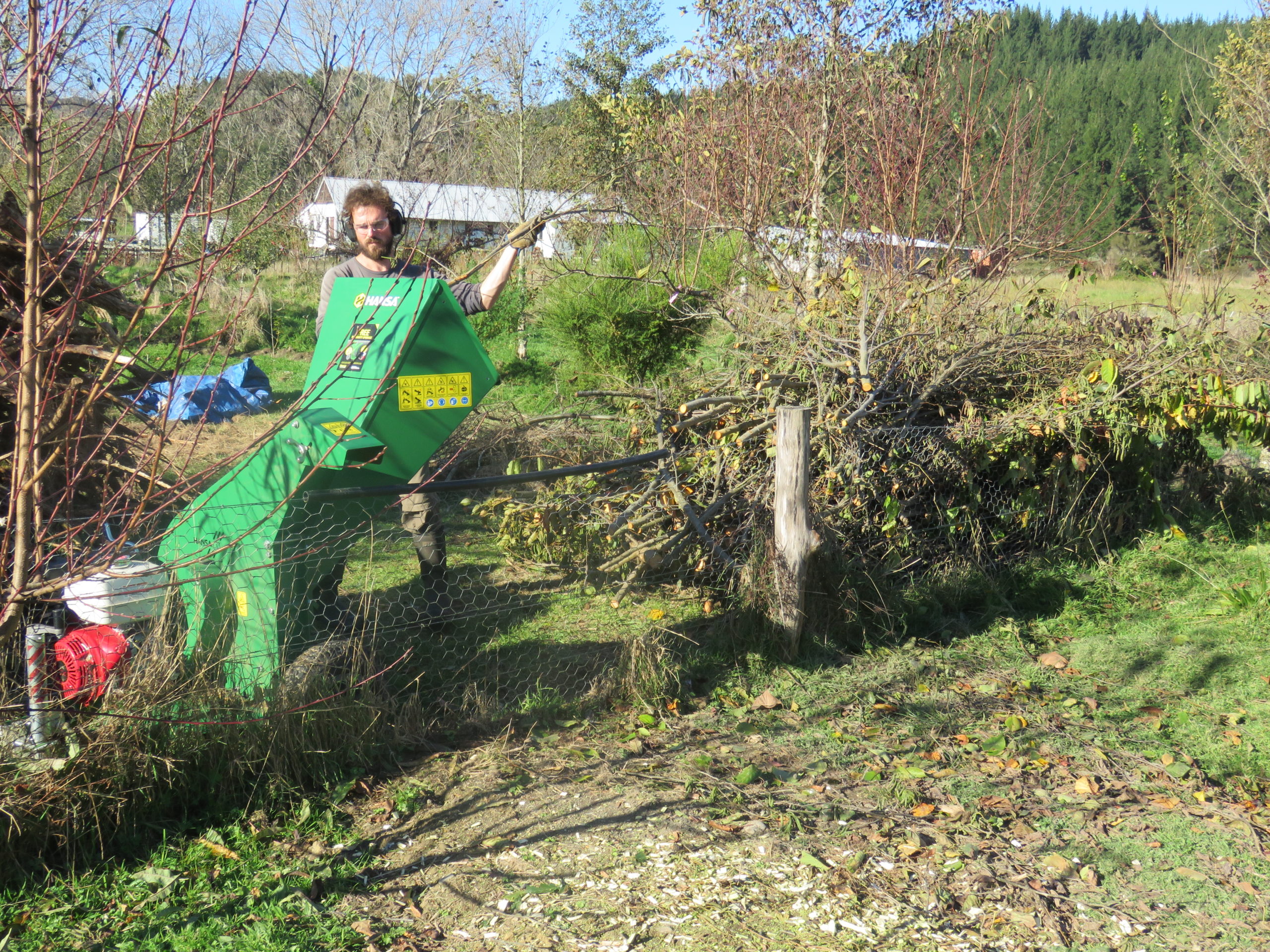Kōanga & Ben Callander
The Role of Mycorrhizal Fungi:
A key component of the health of most plants is the symbiotic relationship formed between mycorrhizal fungi and plant roots. Fungi don’t photosynthesize, instead they rely on the carbon captured by plants in order to thrive. Mycorrhizal fungi exists as a vast filamentous underground body called a mycelium which establishes a connection with the roots of living plants. Due to this filamentous structure the mycelium has the potential to expand the surface area of a plants access to nutrients and water by upwards of 100 times which has a huge effect on the resilience of the plants and their capacity to become nutrient dense.
Mutualistic Symbiosis (Some Friends Bring The Crackers, Others The Cheese)
A metaphor for how the cooperation between plants, fungi and bacteria works: The bacteria are the workers in the mines gathering building materials, the fungi is the transport system conveying the goods and the plant is the structure built by the materials. The plant through photosynthesis provides carbon to feed the fungi, fungal exudates feed bacteria and bacterial enzymes dissolve rock. The minerals from the rock are now in a plant available form that can be transported by the fungi to feed the plant and strengthen the photosynthesis process; therefore all three organisms by benefitting the whole also benefit themselves! Holy logrolling Batman!
Someday We’ll Find It, The Ramial Connection, The Gardeners, The Wood Chip and Me…
In order to make a fungally dominated soil we are using Ramial Chipped Wood. The soluble lignins found in the smaller twiggy new growth of deciduous hardwood trees are a key part in building the humus rich soils of forest and forest edge ecologies as branches break and fall to the forest floor and young saplings yield to succession and fungi eat them… With Ramial Chipped Wood (chipped buds, shoots and twigs of less than 7cm diameter.) we can imitate this forest edge soil ecology to increase fertility and build carbon and fungi rich soils in our gardens.
Important Considerations:
When making Ramial Chipped Wood it is crucial to stress the importance of using only the twigs shoots and buds as the majority of enzymes, minerals, proteins, amino acids and phytohormones are found in the new growth of trees. Also crucial is to make Ramial Chipped Wood from mainly deciduous trees as the ‘white rots’ associated with deciduous trees make fully available the lignins, cellulose, nutrients and minerals contained within. Fulvic and humic acids believed to be the key ingredients in the humus ‘cake’ are the result of this saprotrophic ‘white rot’ fungal frenzy. Avoid using conifers and other evergreen species as the ‘brown rots’ associated with them don’t fully break down the material and can work to suppress the plants we are wanting to nourish.
Checklist for ideal material to use for Ramial Chipped Wood:
- -Deciduous is best.
- -Dormant wood is preferable.
- -No more than 20 percent evergreens in the mix.
- -The smaller the branch the higher the nutrient proportion.
Some strategies for using Ramial Chipped Wood:
Mulch around trees in forest gardens and orchardsMulch the vegetable garden to create a fungal sanctuary, supporting mycorrhizal fungi in sustaining underground connections throughout the entire vegetable patch.Use as a soil amendment in the vegetable garden by adding 2-5 cm of ramial wood chip and fork it into the topsoil. It’s important to only do this in Autumn and to grow a nitrogen fixing crop in these beds over winter. Compost Ramial wood chip for several months until it has a rich earthy smell and you can you see the white mycelium, and then fork it lightly into the top layer of soil before planting out seedlings.
Our Hansa Chipper
We are lucky enough to have a Hansa C13 Chipper that was donated to us by Hansa. Hansa are a New Zealand company and we are very happy with our robust, efficient and easy to use chipper.




